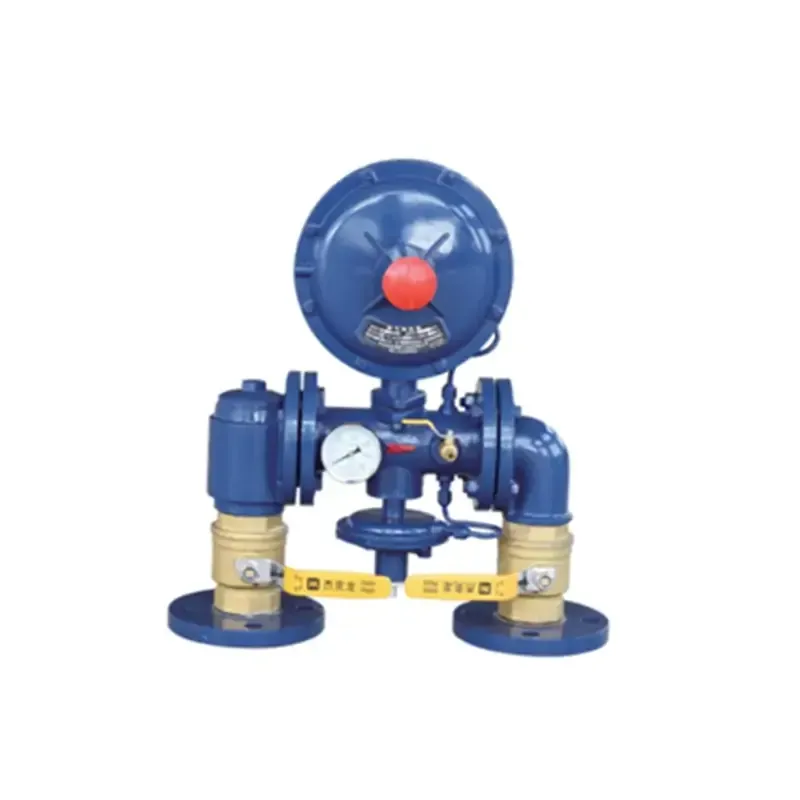
9 月 . 23, 2024 11:18
Back to list
Understanding the Functionality and Applications of Pressure Reducing Valves in Fluid Systems
Understanding Pressure Reducing Valves A Comprehensive Guide
Pressure reducing valves (PRVs) play a crucial role in various industrial and domestic systems by maintaining a stable and safe outlet pressure despite fluctuations in supply pressure. These valves are essential for protecting equipment, ensuring efficiency, and maintaining safety across a wide array of applications. In this article, we will delve into what pressure reducing valves are, how they work, their types, applications, and maintenance tips.
What is a Pressure Reducing Valve?
A pressure reducing valve is a type of valve that automatically reduces and regulates the pressure of a fluid to a desired level. Its primary function is to maintain a constant outlet pressure, which can be critical for preventing damage to downstream equipment such as pumps, boilers, and piping systems. By doing so, PRVs improve the overall efficiency of system operations and enhance safety by preventing overpressure situations.
How Do Pressure Reducing Valves Work?
The operation of a pressure reducing valve is based on a simple yet effective principle. The valve typically consists of a spring, diaphragm, and an inlet and outlet port. When fluid enters the valve, it exerts pressure on the diaphragm. The spring is pre-adjusted to a specific pressure setting, allowing it to exert a counterforce against the fluid pressure. When the inlet pressure exceeds the set pressure, the diaphragm moves, causing the valve to partially close and reduce the flow, thereby stabilizing the outlet pressure.
As the downstream demand changes, the valve automatically adjusts to maintain the set pressure. This self-regulating characteristic is what makes PRVs particularly valuable in applications where pressure variation is common.
Types of Pressure Reducing Valves
There are several types of pressure reducing valves, each designed for specific applications
1. Direct-Acting Pressure Reducing Valves These are the most common types and operate based on the pressure from the fluid. They are typically used in smaller systems.
2. Pilot-Operated Pressure Reducing Valves These valves use a pilot valve to control larger flow rates and are often used in industrial applications where significant pressure variations occur.
3. Electro-Mechanical Pressure Reducing Valves These modern valves utilize electronic sensors and actuators to respond to pressure changes, offering precise control over outlet pressure.
Applications of Pressure Reducing Valves
pressure reducing valve

Pressure reducing valves are utilized in a wide range of applications, including
- Water Supply Systems PRVs are installed in municipal water supply systems to regulate pressure and ensure that it remains within safe limits for residential and commercial users.
- Boiler Systems In steam boilers, PRVs help maintain the desired steam pressure for optimal operation and safety.
- Irrigation In agricultural practices, pressure reducing valves help control water pressure to prevent damage to irrigation systems and ensure efficient water distribution.
- Pneumatic and Hydraulic Systems PRVs are vital in maintaining stable pressures in pneumatic tools and hydraulic machinery.
Maintenance of Pressure Reducing Valves
Proper maintenance is essential for the reliable performance of pressure reducing valves. Here are some key maintenance tips
1. Regular Inspection Periodically check for leaks, corrosion, or signs of wear. Inspect the valve body, connections, and seals.
2. Adjust Settings If the outlet pressure is inconsistent, it may be necessary to adjust the spring tension or replace worn components.
3. Cleaning Remove any debris or build-up that may accumulate within the valve, as this can impact its function.
4. Consult Manufacturer Guidelines Always refer to the manufacturer's maintenance instructions for specific recommendations on care and servicing.
Conclusion
Pressure reducing valves are vital components in numerous systems, ensuring safety, efficiency, and reliability. Understanding their operation, types, and proper maintenance can help facilities and individuals maximize their performance and longevity, ultimately contributing to smoother operations across various applications. As industries continue to evolve, the importance of PRVs will remain significant in managing fluid pressures effectively.
Latest news
-
Unlocking The Quality Gas Pressure ReducersNewsNov.01,2024
-
The Role of Gas Pressure Reducing StationsNewsNov.01,2024
-
The Importance and Functionality of Safety Relief ValvesNewsNov.01,2024
-
The Essential Role of Safety Valves in Natural Gas ApplicationsNewsNov.01,2024
-
The Essential Role of Gas Pressure RegulatorsNewsNov.01,2024
-
Enhance Your Premium Gas FiltersNewsNov.01,2024

